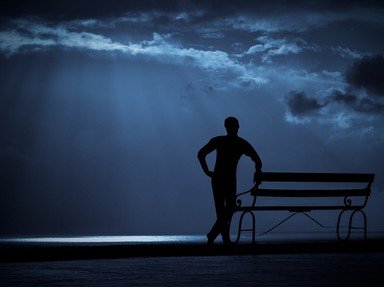Quiz Answer Key and Fun Facts
1. Just after Martin Luther King was shot, there was a very famous picture taken of many of his aides standing on the balcony, pointing in the direction from which the gunshot had come, a nearby rooming house. One of his aides is pictured over King's prone body, trying to attend to his wound. All had raced onto the balcony as soon as they heard the gunshot. Which prominent member of the civil rights community is NOT it the picture?
2. Coretta Scott King was at home in Atlanta with her children when the first television bulletins had come that her husband had been shot. Where was she when she learned he had died?
3. James Earl Ray, King's assassin, had checked into a rooming house which gave him an unfettered view of the balcony on the Lorraine Motel, where King was staying. He found the clearest view came from the bathtub in the communal bathroom. Where did Memphis police find the gun he used to shoot King?
4. Coretta Scott King went to Memphis the next day to bring her husband's body home to Atlanta. Who made all the arrangements to charter the plane that brought King home?
5. When Dr. King was killed, he was the head of the Southern Christian Leadership Counference. Who had to immediately take over for him, not only to represent them at the funeral, but to continue the plans for a Poor People's March on Washington which was scheduled to begin within weeks?
6. Among the hundreds of dignitaries who attended Dr. King's funeral was the most famous woman in the world at that time, Jacqueline Kennedy. Aside from Dr. King's funeral, at the funerals of which other men who were assassinated did Jacqueline Kennedy and Coretta Scott King meet?
7. The funeral service for Dr. King was held in the church where he and his father were both ministers, Ebenezer Baptist Church, in Atlanta.
8. The funeral procession that took Martin Luther King's body from the church to the place where his body would be temporarily interred seemed to be modeled in some ways on the funeral procession for President John F. Kennedy. Ordinary people who had quietly mobbed the streets between the church and King's temporary grave, fell in line behind the official mourners, so that by the time the procession reached the burial site at Morehouse College, at least 50,000 people were walking along with the casket. JFK's casket had been carried to his gravesite at Arlington National Cemetery atop a gun carriage drawn by horses. How was Martin Luther King's body taken to its burial site?
9. The car James Earl Ray used in his escape from Memphis after he killed King was found a week later in a very odd city. Where?
10. On the night before his death, exhausted and wanting nothing but a good night's sleep, King decided to cancel a rally he had planned at a nearby church. But he changed his mind when Ralph Abernathy, who had already been at the church, told him people were all worked up, excited to be hearing from the incredible man. So King got out of his bed, got dressed and made one of the most remarkable speeches of his life. In it, be talked about "the promised land". His words betrayed his dark sense of foreboding. He told the screaming, clapping parishoners that he "might not get there with you," but he had seen promised land, and although he might not get there,that was okay. He felt protected by God's and feared no one. That speech came to be known as:
Source: Author
goodreporter
This quiz was reviewed by FunTrivia editor
bloomsby before going online.
Any errors found in FunTrivia content are routinely corrected through our feedback system.
